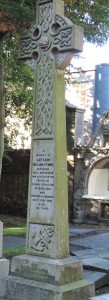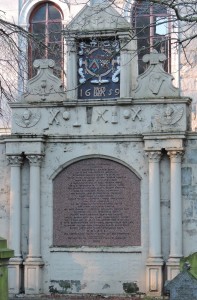There are many significant individuals buried in the Kirkyard. From time to time we intend showing some of these and telling a little of the story of the person commemorated.
 This picture shows the memorial to Captain William Penny. He was born into a whaling family in 1809 and had started working for his father by the age of 12 and continued in the trade for 47 years. He died in Aberdeen aged 82 years. He was something of a pioneer, being an early enthusiast for the use of steam rather than sail. His crew were less keen and threatened to tar and feather him!
This picture shows the memorial to Captain William Penny. He was born into a whaling family in 1809 and had started working for his father by the age of 12 and continued in the trade for 47 years. He died in Aberdeen aged 82 years. He was something of a pioneer, being an early enthusiast for the use of steam rather than sail. His crew were less keen and threatened to tar and feather him!
The memorial records ‘Arctic explorer who assisted in the Franklin expeditions of 1850 and 1851’. In addition to being a whaler, Penny was an explorer of the seas off the Canadian Arctic Territories, where the Penny Strait is name after him. He is said to be the first explorer to see the open Polar Sea (Arctic Ocean) to the north of the Penny Straits. Sir John Franklin was another arctic explorer who had attempted to penetrate Lancaster Sound in 1845 in search of the ‘North-West Passage’, but never returned. The Admiralty organised a search for Franklin. It was Penny who, in 1851, found traces of Franklin’s winter quarters on 1845-6 on Beechey Island. The mortal remains of Franklin have never been found, although he seems to have died in June 1847. There is more information about Captain Penny in the Aberdeen Maritime Museum.
